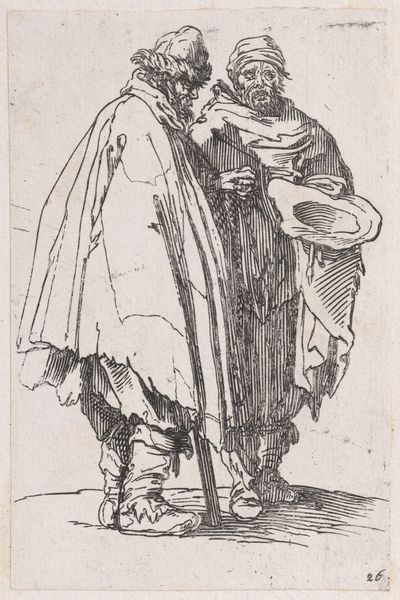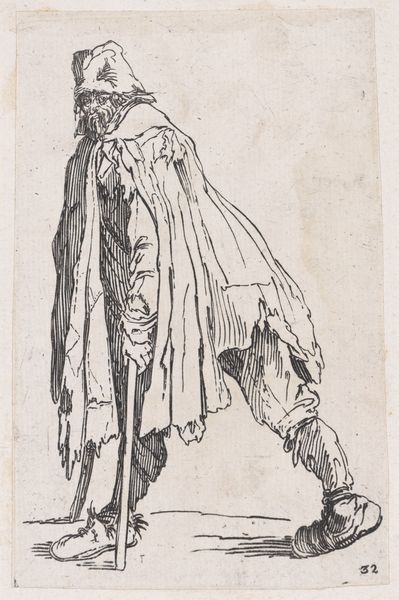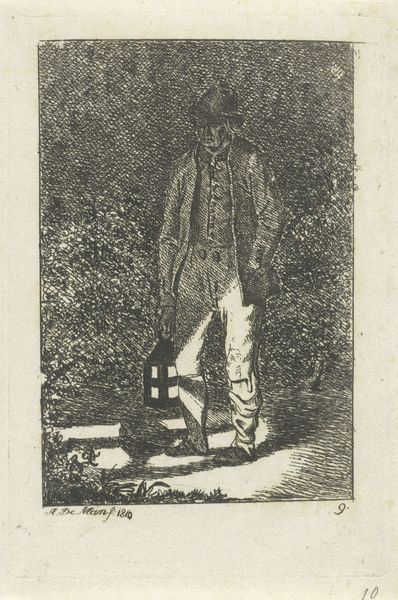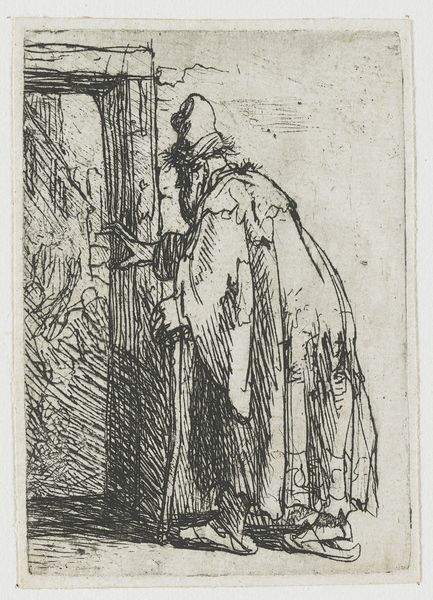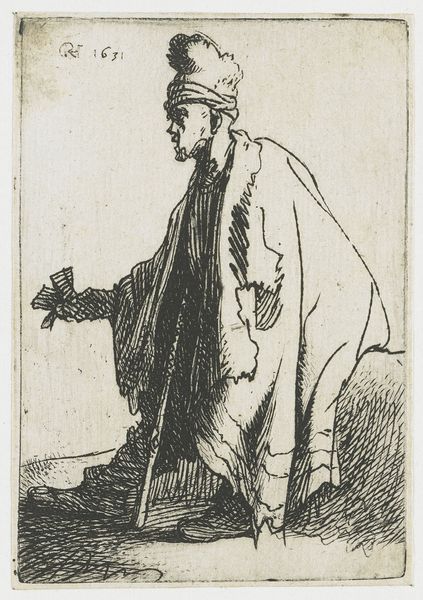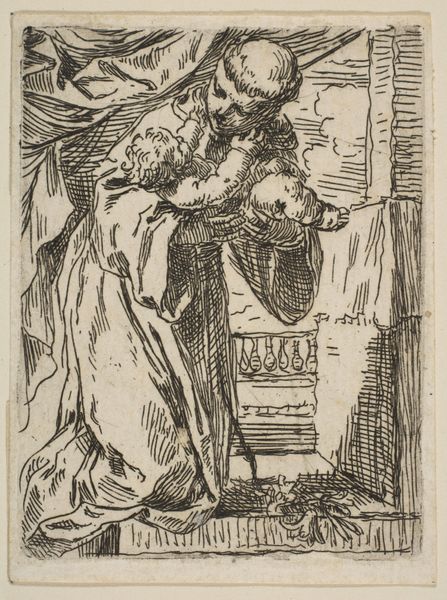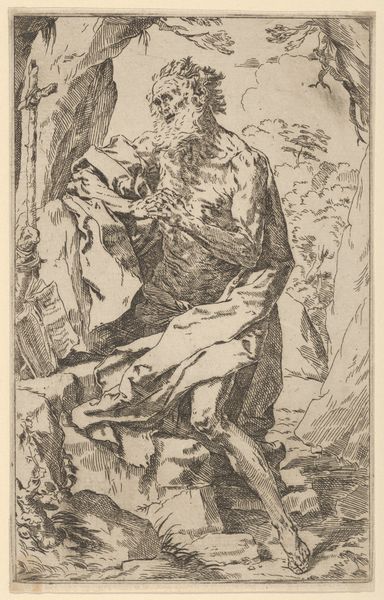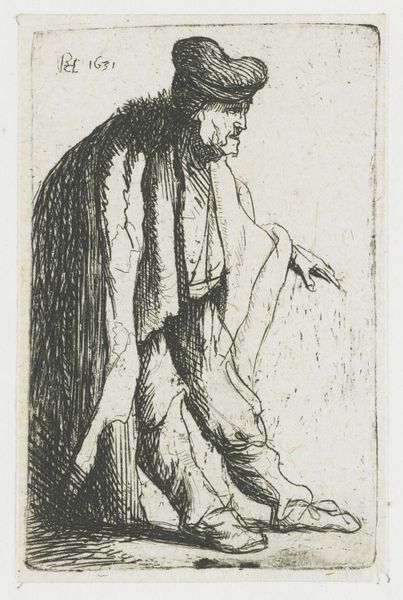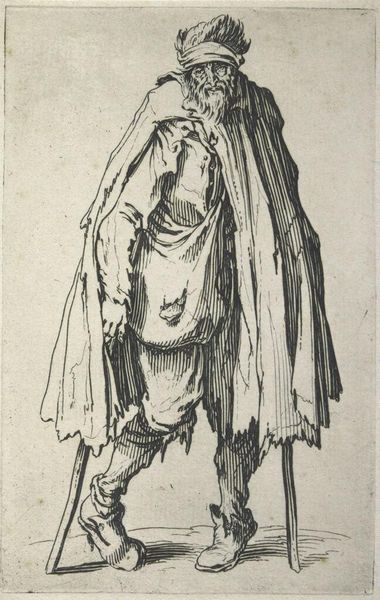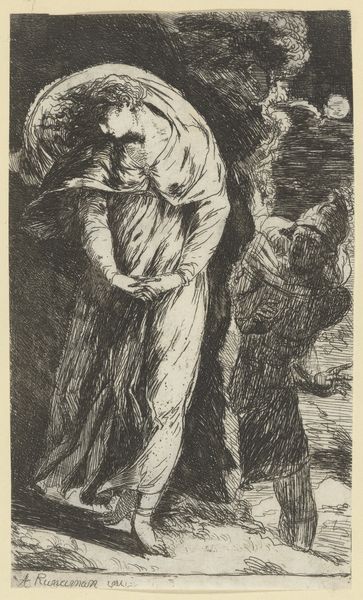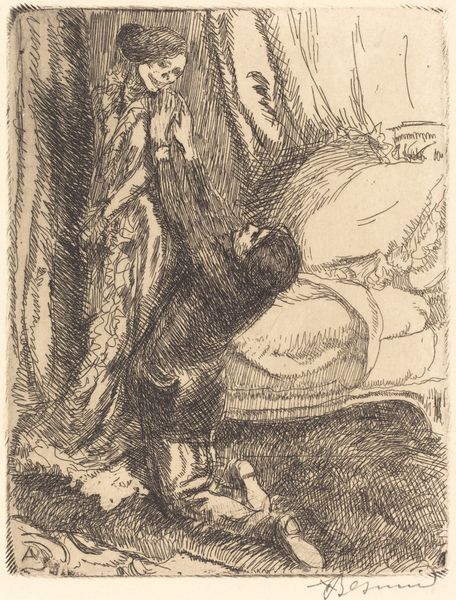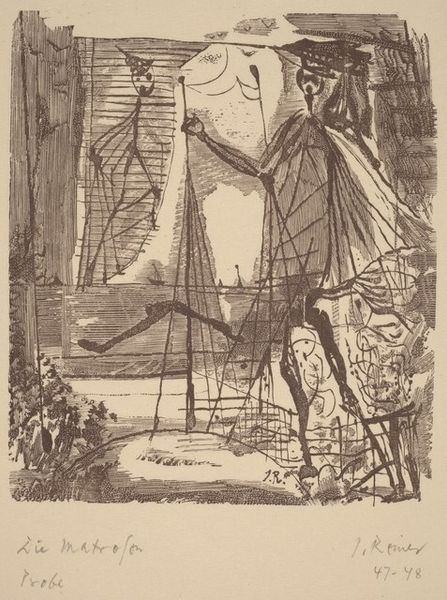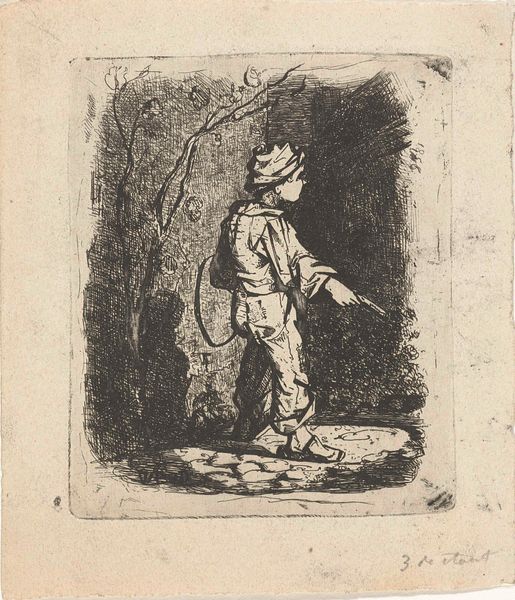
A beggar in a tall hat and long cloak, with a cottage and two figures in the background 1841 - 1911
0:00
0:00
drawing, print, etching, ink
#
portrait
#
drawing
# print
#
etching
#
landscape
#
ink
#
realism
Dimensions: height 117 mm, width 87 mm
Copyright: Rijks Museum: Open Domain
Curator: L\u00e9opold Flameng created this etching titled "A beggar in a tall hat and long cloak, with a cottage and two figures in the background" sometime between 1841 and 1911. Editor: My immediate reaction is the overwhelming weight of the cloak. It’s visually heavy, isn't it? It almost seems to define the figure more than his actual form does. The texture, scratchy, very tactile. Curator: Indeed. And look closer—that cloak becomes almost like a shroud, a symbol not just of poverty, but perhaps also a deeper societal displacement. It draws upon the archetype of the wanderer, familiar across cultures. The cottage scene is an idyllic backdrop, really, set in contrast to the Beggar. Editor: You're right, the cottage...It is just a suggestion, a few scribbled lines, really, which almost belittles the materiality of their labor too! The etching technique allows Flameng to produce countless prints—which meant this image could circulate widely, speaking perhaps to the social conditions it represents. Curator: Exactly! The reproduction itself becomes part of the narrative, a spreading of the beggar's plight. The deep shadow that the Beggar casts at the ground also gives a strange monumentality to his figure within the scene. It brings into questions how we receive these figures and whether we consider how those we may push away add to the bedrock of our culture. Editor: It is intriguing to consider who had access to these images back then too, and what those contexts of display were. Its materiality— the relative ease with which it could be made — challenges ideas about rarity. Curator: Yes! And that tall hat atop the beggar: it elevates him in some way, paradoxically imbuing him with a certain…authority, even. Despite his obvious destitution. He’s both a figure of pity and one of strange, enduring presence. It begs questioning, who exactly holds real authority here. Editor: An inexpensive medium for documenting poverty-- that juxtaposition really heightens the tension between accessibility and social disparity that is apparent. I have enjoyed investigating this tension. Curator: It certainly invites us to contemplate the symbolic weight we place on figures of marginalization, doesn't it? Thanks for these insights on its composition and creation.
Comments
No comments
Be the first to comment and join the conversation on the ultimate creative platform.

